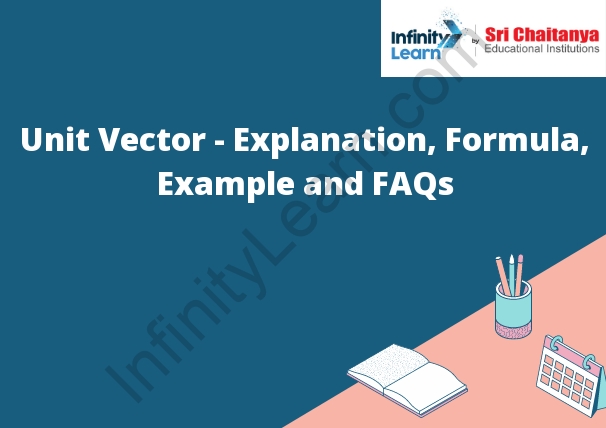Table of Contents
What is Unit Vector?
A unit vector is a vector that has a magnitude of 1. A vector can be represented as a list of numbers, and each number in the list represents the magnitude of a component of the vector. A unit vector is a vector that has a magnitude of 1 and all of its component magnitudes are equal.

Magnitude of Unit Vector
A unit vector is a vector with a magnitude of 1. A vector has both magnitude and direction. The magnitude is the length of the vector, and the direction is the direction in which the vector points. A vector can be represented using a number and an arrow, as shown below.
The magnitude of a vector can be found using the Pythagorean theorem. The equation for the Pythagorean theorem is a^2 + b^2 = c^2. In this equation, a and b are the two shorter sides of a right triangle, and c is the length of the hypotenuse. The magnitude of a vector is the length of the hypotenuse.
The direction of a vector can be found using the angle between the vector and the positive x-axis. The angle is measured in radians. A radian is a unit of measure that is used to measure angles. There are 2*pi radians in a circle. The direction of a vector can be represented using an angle and a vector, as shown below.
The magnitude of a unit vector is 1. The direction of a unit vector is the angle between the vector and the positive x-axis.
Representation of a Vector
A vector is an entity that has both magnitude and direction. It is represented in mathematical notation by an arrow, with the magnitude (length) of the arrow representing the magnitude of the vector and the direction of the arrow representing the direction of the vector. Vectors are used in physics and engineering to model the motion of objects and to calculate the forces that act on them.
Unit Normal Vector
The unit normal vector is a vector that is perpendicular to a given surface. It is typically denoted with a hat symbol (^), and its magnitude is equal to the surface’s normal vector magnitude. The unit normal vector is important for calculating surface integrals, as we will see in later chapters.
Related to Unit Vector
A vector is a mathematical object that has both a magnitude and a direction. A vector can be represented in mathematical notation as an arrow with a certain length and direction. The direction is represented by the angle that the arrow makes with the positive x-axis. The magnitude is the length of the arrow.
A vector can be decomposed into its component parts, which are called its vector components. The vector components are the components of the vector in the direction of the positive x-axis and in the direction of the positive y-axis. The vector components are always perpendicular to each other.
A vector can be represented in terms of its vector components using the following equation:
A = A x cos(θ) + A y sin(θ)
Here, A x is the magnitude of the vector in the direction of the positive x-axis, A y is the magnitude of the vector in the direction of the positive y-axis, and θ is the angle that the vector makes with the positive x-axis.
Spherical Coordinate Unit Vector
A spherical coordinate unit vector is a vector that has its tail at the origin of a coordinate system and points in the direction of a given point on the surface of a sphere. The magnitude of the vector is the distance from the origin to the point on the sphere, and the direction is measured in degrees from the positive x-axis.
Unit Tangent Vector
A tangent vector is a vector perpendicular to a curve at a given point on the curve. The vector is determined by taking the derivative of the position vector with respect to time.





